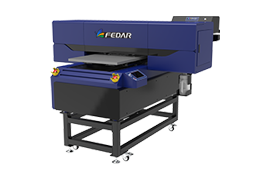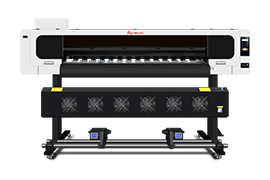Product Categories
- > Digital Textile Printer
-
- Fedar Sublimation Textile Printer
FEDAR FD61916E Sublimation Printer FEDAR FD1924 Sublimation Printer FEDAR FD1912S Sublimation Printer FEDAR FD61915E-A Sublimation Printer FEDAR FD5198E Sublimation Printer FEDAR FD51915E Sublimation Printer FEDAR FD53215E Sublimation Printer FEDAR FD61915E Sublimation Printer FD6198E 8 Heads Printer FD6194E 4 Heads Printer FD5194E 4 Heads Printer FD5328E 3.2m Printer FD5193E 3 Heads Printer Fedar TC Series Sublimation Printer(3heads,4heads,6heads)(Stop) FD5268E 2.6m Printer FD5223E 2.2m Printer (Stop) FD1900 2 Heads Printer AL193 3 Heads Printer (Stop) TC1932 2 Heads Printer (Stop)
- Fedar Direct To Film
A3 DTF Printer FDA3 DTF Printer FD70-5 DTF Printer FD70-3 DTF Printer (Stop) FD30 DTF Printer (Stop) FD60 DTF Printer FD70-4 DTF Printer FD65-2 DTF Printer (Stop) FD70-2 DTF Printer (Stop) TR 4180 (Stop) FD 680 DTG (Stop) FD1828 Belt cotton printer (Stop)
- Fedar Sublimation Textile Printer
Comparison Between Pinch Rollers and Rubber Rollers
2025-09-09The paper feed shaft cooperating with the pinch rollers is made of rigid material, offering high wear resistance and minimal long-term wear. In contrast, the rubber rollers, being made of elastic material, have relatively lower wear resistance.
Purchase Cost
The rubber roller drive solution is primarily used in large-scale printing equipment with long stepping lengths and high stepping frequencies. The pinch roller drive, on the other hand, is generally applied in small and medium-sized printing devices with printing speeds not exceeding 500 m/h. The cost of rubber roller machines is higher than that of pinch roller machines. Additionally, the paper feeding process of rubber roller machines requires high-quality supporting devices for the printing equipment, which not only increases the cost of the rubber roller unit itself but also raises the expenses of other auxiliary components, thereby increasing the overall cost of the printing system.
Operating Cost
(1) Maintenance Cost
When the pinch rollers are damaged, they can be easily replaced at a low cost.
However, if the rubber rollers are damaged, the entire machine must be disassembled for replacement and repair. Once the rubber rollers are damaged, end customers cannot perform repairs or replacements on their own.
(2) Energy Consumption Cost
Rubber roller machines consume relatively higher power compared to pinch roller drive equipment, resulting in higher electricity consumption.
Ease of Operation
Rubber roller machines lack main unit support for structural strength and are fixed with two-point support via crossbeams. Paper alignment is achieved by winding the paper back and forth on the rubber surface of the rollers. In contrast, paper loading with pinch rollers relies on four-point support fixed on the main unit of the roller crossbeam, eliminating the need for back-and-forth paper winding to achieve alignment, making the operation more convenient.

Application Types and Advantages
Rubber Roller Drive: Provides higher paper pulling strength, tighter paper support, and more balanced and smooth paper feeding. It performs exceptionally well in large-scale printing equipment with printing speeds exceeding 500 m/h.
Steel Spiked Shaft with Pinch Roller Drive: For 15-head equipment and models with 15 heads or fewer, the pinch roller drive is fully capable of handling paper feeding. Moreover, the equipment cost, long-term maintenance costs, and operational consumption costs are relatively lower.





